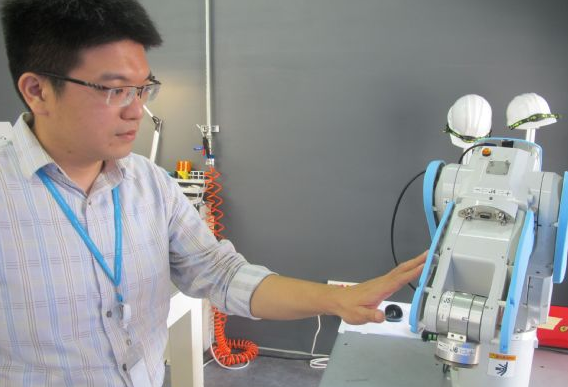In the future, relying on a fingertip of human beings, you can achieve perfect interaction with robots! The key behind this is to make the robot have the "tactile" sensing technology that is as sensitive as human skin. The R&D team behind this is from 100% "MIT", which is recognized by the internationally renowned robot manufacturers. Taiwan has jumped again at the robotics level.
The birth of collaborative robots is born in response to the trend of man-machine cooperation, and it is not only man-machine cooperation, but also the robots must be close to the scope of human work. However, if the robot is to be used by fences in the past, it will lose the meaning of human-computer cooperation. That is to say, the use of traditional industrial robots is intrinsically conflicting with human-machine cooperation.
Once the robot is required to step out of the fence, human security will be considered a top priority. Robot manufacturers or manufacturers must ensure that humans are safe in working together to prevent humans from being injured when colliding with robots.

"The key technology for robots to fully enter human life is touch!" Whether it is the most widely used industrial use today, or the service robots that are close to the general public, Lu Yuanli, the general manager of the original machine, said. Originally, Seiko Seiko was independent from the ITRI last year. Its expertise is in the development of tactile sensing technology and its application in the field of robotics.
Lu Yuanli said that tactile sensing is a market that has not yet matured in today's robotic applications, but it does have its importance in terms of robots. In addition to making robots smarter and better, the most important thing is to ensure robots. Security on the use.
The principle of tactile sensing is similar to the way humans generate touch through the peripheral nerves of the skin, and can sense and recognize the objects touched by the fingertips. The original Seiki combines this sensing technology with the concept of skin, even It is also called "tactile skin."
Through this layer of skin, the robot can sense everything in the external environment in a more intuitive way. Once the "skin" senses the collision, it will immediately stop, and its sensitivity is even under the slight touch, the robot can also Identify and react in the shortest amount of time. The premise of realizing the goal of human-computer cooperation is to ensure the safety of human workers. Therefore, when the dead robot has high-sensitivity collision detection, human security can be more protected.
Lu Yuanli said that on this layer of tactile skin, the design of each sensor spacing is less than 8 cm, which is the width of a fingertip, which is also the smallest range of the human body surface, plus the reaction time is less than 5 milliseconds, so that Ensure that it can be detected in the shortest time at any collision angle.
Although the traditional industrial robot has the advantages of high speed operation and high passenger weight, it lacks the concept of human-machine cooperation in the early stage, which makes it lack of safety design. However, there is still a need for man-machine cooperation in the market. If the industry does not consider re-purchasing a robot with collision sensing, it is basically difficult to achieve the goal of man-machine cooperation.
The original intention of the technology developed by Seiki was to take this layer into consideration, so they installed the design of the tactile skin on the surface of the arm in a "plug-in" manner, which is as easy to disassemble and install as a mobile phone case. For the traditional old industrial robots, as long as the simple steps can not only retain the advantages of the original industrial robots, but also safely carry out man-machine cooperative production.
The advantages of tactile skin are not limited to safety design alone, but can also be reflected in robotics in the future. The original Seiki machine also observed that in the future, the market will enter a small amount of flexible production, and the process changes rapidly, but it is very difficult to adjust and teach the current robot production line.
On the other hand, the tactile skin can be designed to allow the user to reach the robot's teaching through the push of "one fingertip", allowing the robot to make subtle movements in an autonomous manner through tactile perception, avoiding the passive hand-drawn teaching in the past, resulting in excessive thrust loss. Quasi-the situation. Lu Yuanli said that this has a very good effect on the most difficult straight line and high-precision movement in robot teaching.
The original fine machine is also optimistic that the fingertips will become the trend of future robots. In particular, the goal of Taiwanese manufacturers in the future will be refined and customized. In order to keep up with this market trend, think about how to make the robots shorten the time and improve the teaching methods. Efficiency is also an urgent task for many Taiwanese automation companies or manufacturers.
Servo Systems,Servo Drive System,Servo Positioning Systems,Cnc Machine Ac Servo
Zhejiang Synmot Electrical Technology Co., Ltd , https://www.synmot-electrical.com